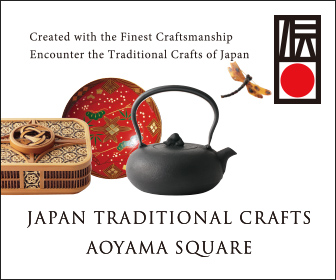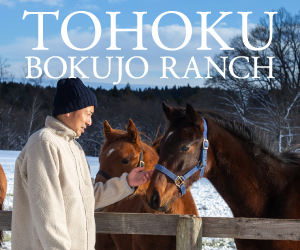NEW YEAR’S FEAST
NEW YEAR’S FESTIVITIES WITH OSECHI RYŌRI
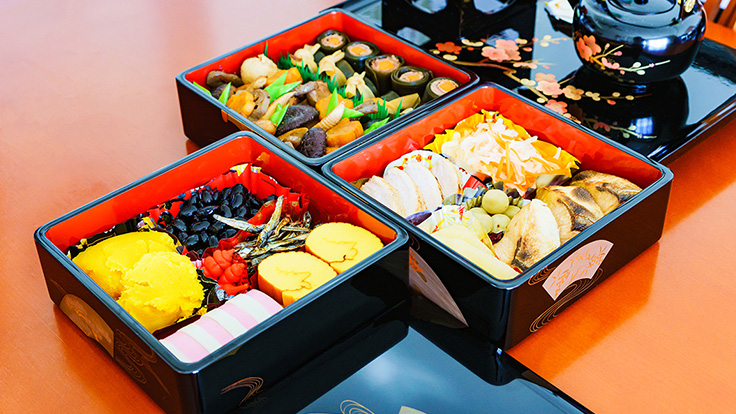
GETTY IMAGES
The biggest holiday in Japan is around New Year’s Eve, and centers on the feasts served during the holiday period, which lasts for three days. These days are the most colorful and elaborate of the year. At the center of the festivities is a grand array of colorful foods called osechi ryōri (traditional Japanese New Year’s food). Osechi ryōri, which has its origins in the festive food served at the imperial court during the Nara Period (710 to 794), originally referred to any feast food presented on any significant day of the year, such as Children’s Day on May 5. But by the late Edo Period (1603 to 1868) it had come to mean the food served over New Year’s.
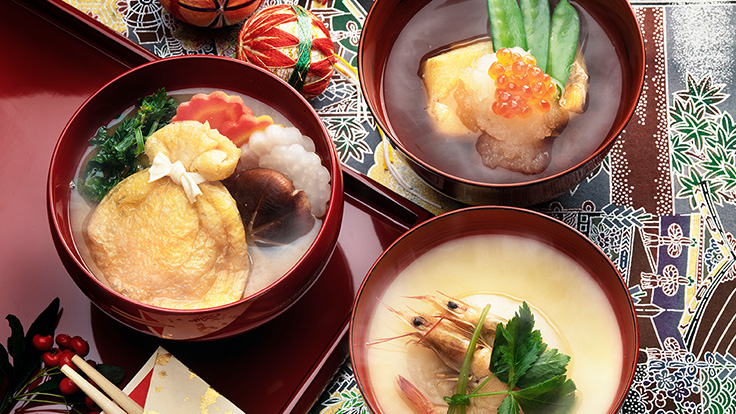
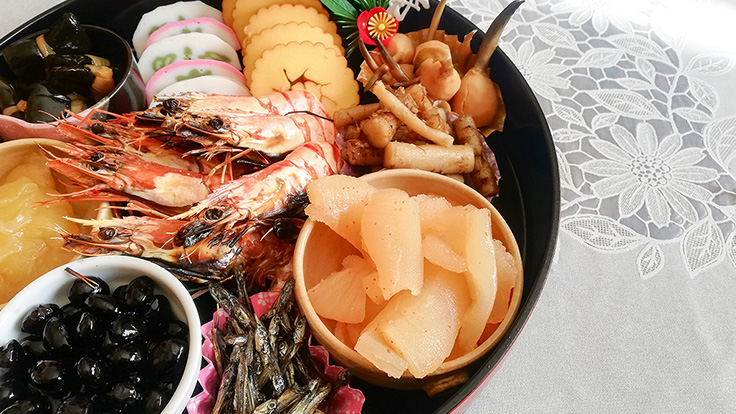
The contents of traditional osechi also have their origins in the Edo Period. While there are regional variations, there were three main elements: kazunoko (salted and marinated herring roe), symbolic of the wish to be blessed by many children; tazukuri, the crispy candied baby sardines that signify a wish for fertile harvests (sardines were a common fertilizer) and tataki gobo (pounded and simmered burdock root), which symbolizes the desire for a stable family with roots as deep as gobo. Not only were these ingredients simple and economical to make, they lasted for a long time in the days before refrigeration, so could be prepared in advance and served throughout the New Year’s holidays. Accompanying them was a grilled whole tai (sea bream), plus ozōni, a soup of dried mochi (rice cakes) cooked in various ways. Rice is the traditional offering made to Shinto gods, and mochi is the ultimate form of rice. These foods lighten the work of the cook of the household during the holidays and are served in stacking wooden boxes called jūbako, which signify the layering of good luck. As the years passed, more items were added to the array of lucky osechi foods. These include kuromame, sweet, simmered black soybeans to signify the wish to avoid family illness and disasters. Pink and white kamaboko (fish cakes) are used because half-moon shapes resemble the sunrise, the color red (actually pink) is said to ward off evil, and white signifies purity. Datemaki (fish omelets that resemble scrolls) express a desire for cultured and educated family members. Kuri kinton, which is golden sweet chestnuts mixed with mashed sweet potatoes, are symbolic of gold and silver treasure and reflect a desire for fortune.

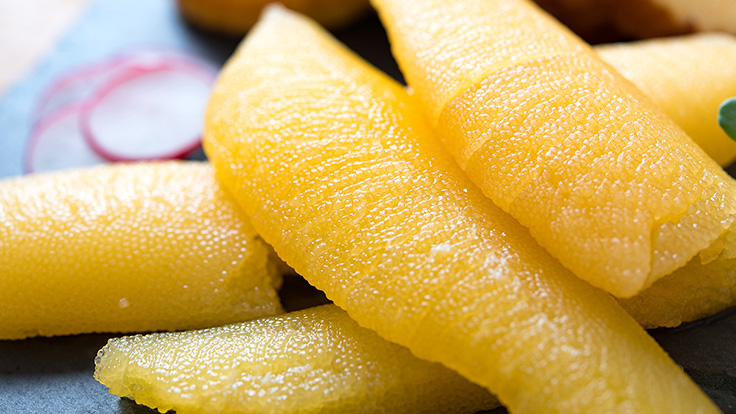
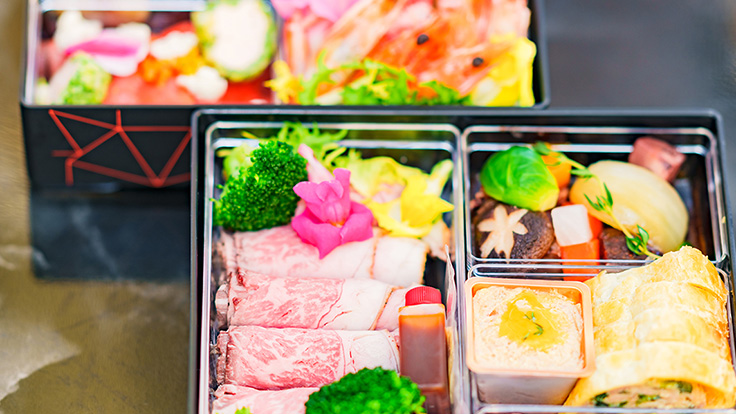
Kobumaki (konbu seaweed wrapped in bundles around dried herring) signify a wish for long life, as well as many children. Red and white namasu, or shredded radish and carrots in a vinegar sauce, are supposed to look like the colorful and auspicious paper cords called mizuhiki that are wrapped around gifts and stand for peace and prosperity. Onishime is an assortment of vegetables stewed together so the family will stay together. Last but not least, whole shrimp simmered with their heads intact were added as their long whiskers symbolize a wish for longevity.
If this sounds like an awful lot of food to prepare, it certainly is. And it seems that in the late Edo Period, as well as in the following Meiji Period (1868 to 1912), a full-on osechi meal was something that was made by professionals and ordered in, making it the domain of the well-to-do. It wasn’t until the economic boom of the late 1950s through the ’70s that making a full osechi array at home became a thing to do. The cooking and women’s magazines of the time came out with detailed schedules of how a housewife should plan her week leading up to New Year’s Day so that everything would be prepared on time and remain safe and tasty to eat during the feast period. It was a lot of work, but since most women did not work outside the house at that time, this task fell to them.
In the 1980s, as more women began working outside the home, department stores started to offer fully made and assembled osechi sets. Their popularity has grown over the years and they are now available from many sources, including online, meaning that hardly anyone these days makes all their osechi ryōri anymore. In a sense, things have come full circle since late Edo.

Another thing that has changed is the content of the modern osechi ryōri set. While the traditional symbolic items are still there, a variety of European-style hors d’oeuvres and delicacies have made their way in, such as sliced roast beef, smoked salmon, marinades and so on, as well as Japanese foods that require refrigeration, such as grilled fish and sashimi. This reflects the fact that many traditional osechi items are very sweet, salty or sour, clashing with current tastes. There’s also the fact that there’s no need for foods to last for several days without refrigeration anymore, and that many stores these days now opt to operate on New Year’s Day. Popular non-osechi New Year’s foods these days include sushi, grilled beef and other crowd-pleasing items. A more recent development is one-item osechi ryōri offered by some convenience stores. This allows even single people to get a quick taste of osechi — as well as the good luck — without having to order an elaborate full-blown set. But there is nothing like the sensory impact of a complete, colorful osechi ryōri presentation, so one hopes the tradition will survive in one form or another for a long time to come, even as the contents evolve with the times.
Here are three spots in Tokyo to enjoy osechi ryōri:
Hotel Chinzanso Tokyo:
The buffet at Hotel Chinzanso Tokyo offers a variety of New Year’s dishes, featuring traditional Japanese osechi ryōri as well as cuisine from Chinese and Western new year celebrations. Guests can also enjoy both Kansai- and Kanto-style ozōni.
Date: Jan. 1 (Sun)-Jan. 3 (Tue)
Hours: Lunch buffet: 10-11:40/11-12:40/13:30-15:10/14:30-16:10, Dinner buffet: 17-18:40/18-19:40
Website: https://hotel-chinzanso-tokyo.com/events/new-year-2023-buffet
Sheraton Miyako Hotel Tokyo:
In addition to Japanese new year cuisine osechi and ozōni, guests can also enjoy teppanyaki (iron grill cooking), seafood bowls and popular Chinese dishes.
Date: Jan. 1 (Sun) and Jan. 2 (Mon)
Hours: Lunch buffet: 11-12:30/13-14:30, Dinner buffet: 17-18:40/19:10-20:50 (Jan. 1st only)
Website: https://www.miyakohotels.ne.jp/tokyo/topic/event/1417/
Hotel Ryumeikan Tokyo, Hanagoyomi Tokyo:
Following last year, Hotel Ryumeikan Tokyo’s Hanagoyomi Tokyo restaurant will offer an “order-style” new year buffet. Guests will be offered 20 osechi items in jūbako, as well as Japanese shiratama-zenzai (sweet red bean soup with mochi) for dessert.
Date: Jan. 1 (Sun)-Jan. 3 (Tue)
Hours: 11-14:45
Website: https://www.ryumeikan-tokyo.jp/restaurant/osechi/



